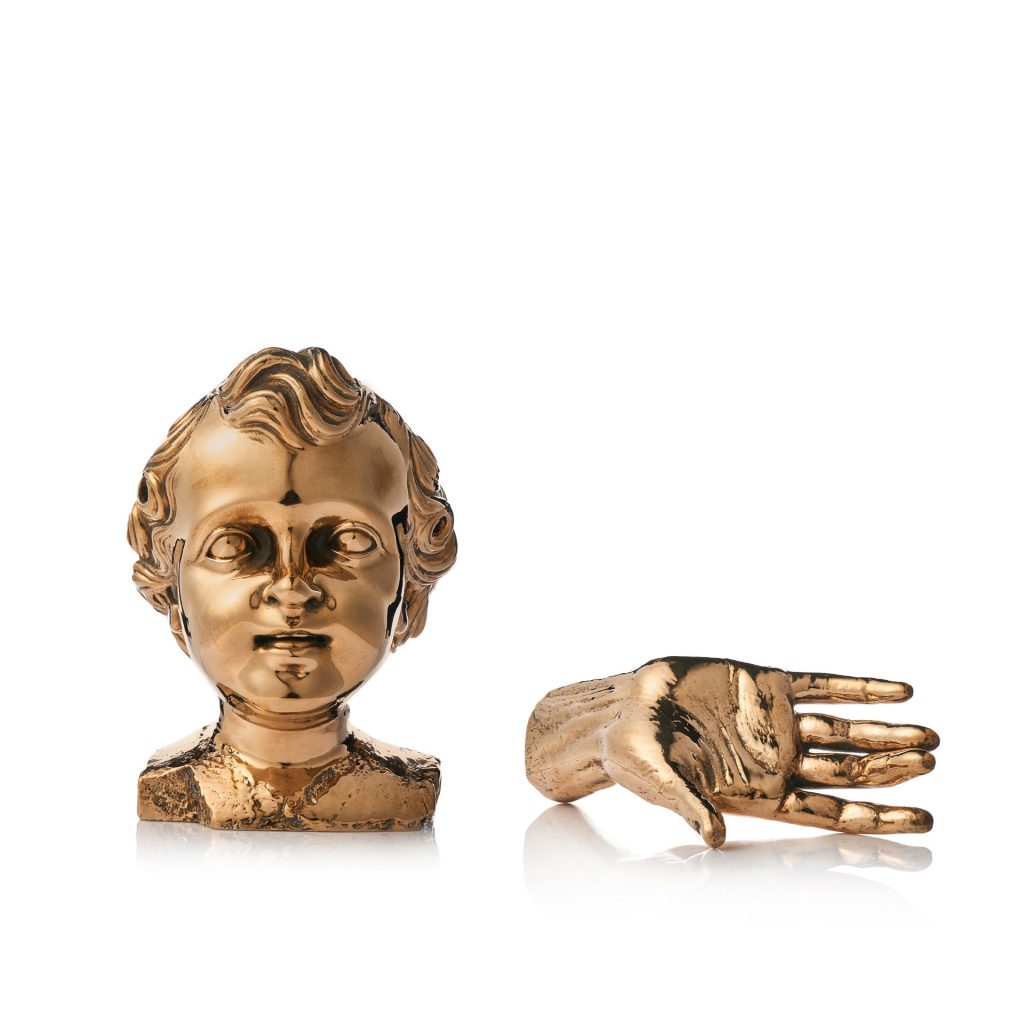Sherrie Levine (b. 1947)
L’enfant Juif, 2006
Bronze in two parts
Courtesy of the Leonid and Tatiana Nevzlin Collection
L’enfant Juif, by the American conceptual artist Sherrie Levine uses this child’s bronze head and open hand to invoke the iconic image of 1943 of the Warsaw Ghetto boy seen holdinghis hands up in surrender. The gold finish and the stillness of the bronze suggest mourning and melancholy — an attempt to protect the child’s innocence.
Must Know
Sherrie Levine (born 1947)in Pensylvania is an American photographer, painter, and conceptual artist. Some of her work consists of exact photographic reproductions of the work of other photographers such as Walker Evans, and Edward Weston.
Sherrie Levine’s work engages many of the core tenets of postmodern art, in particular challenging notions of originality, authenticity, and identity. Levine rose to prominence as a member of the Pictures Generation, a group of artists based in New York in the late 1970s and 1980s whose work examined the structures of signification underlying mass-circulated images—and, in many cases, directly appropriated these images in order to imbue them with new, critically inflected meaning. Since then, Levine has created a singular and complex body of work in a variety of media (including photography, painting, and sculpture) that often explicitly reproduces artworks and motifs from the Western art-historical canon.
Appropriation in art is the use of pre-existing objects or images with little or no transformation applied to them.[1]
Raising questions about originality and authenticity, Levine re-photographs, abstracts or digitizes these images, making them “ghosts” of the original images. “I want to put a picture on top of a picture,” Levine says. “This makes for times when both disappear and other times when they’re both visible.”
In L’enfant juif (2006) we see Sherrie’s unsettling tendency toward transience and death in her pictoral repertoire. The child’s head and open hand could be replicas of decorative figures that have survived as fragments from some greater whole. This work brings together two objects from Levine’s stock of everyday items and things from flea markets and junk shops, which were then cast in bronze: the replica of the head of a boy and, lying beside it, an open hand. Initially resembling a (luxury) toy, the work’s title points to an entirely different context. The pair of sculptures is a three-dimensional allusion to the historical photograph with the same title.
In the best-known photograph taken during the 1943 Warsaw Ghetto uprising, a boy holds his hands over his head while SS-Rottenführer Josef Blösche points a submachine gun in his direction. The boy and others hid in a bunker during the final liquidation of the ghetto, but they were caught and forced out by German troops. After the photograph was taken, all of the Jews in the photograph were marched to the Umschlagplatz and deported to Majdanek extermination camp or Treblinka. The exact location and the photographer are not known, and Blösche is the only person in the photograph who can be identified with certainty. The image is one of the most iconic photographs of the Holocaust,[a] and the boy came to represent children in the Holocaust, as well as all Jewish victims.[

